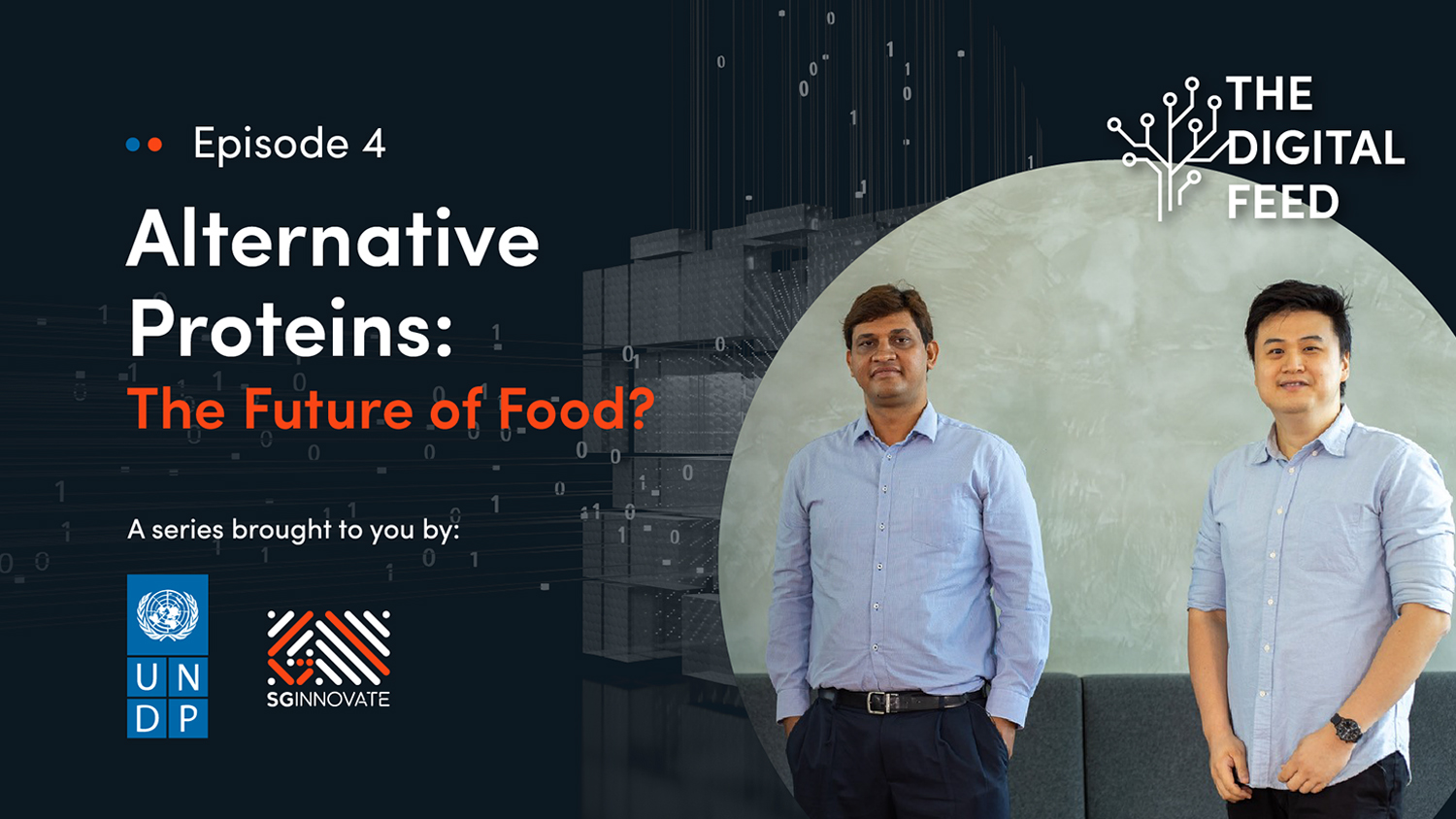The Digital Feed Episode 4: A Look at Alternative Proteins — What it Takes to Enter the Market
Tue, 11/24/2020 - 12:00
Alternative proteins are protein-rich ingredients sourced from plants, insects, fungi, or through tissue culture to replace conventional animal-based sources. Learn more about this fast-growing area of FoodTech with leaders in the alternative proteins ecosystem.
Meat production contributes an estimated 6 billion tonnes of greenhouse gases annually — almost 18% of global emissions. The sector’s significant negative impact on climate change and the environment is driving a shift in the way consumers look at food and rethink their diets. This growing consumer awareness has brought about an increase in interest about and demand for alternative proteins, as evidenced by the rising popularity of brands like Impossible Foods and Beyond Meat as well as growing consumption of soy and oat milk, especially in developed countries.
Alternative proteins are protein-rich ingredients sourced from plants, insects, fungi, or through tissue culture to replace conventional animal-based sources. From soy- or pea-based meat alternatives and cultured beef to milk made from oats and cheese made from cauliflower, there is an impressive range of innovations in this space.
To learn more about this fast-growing area of FoodTech, we interviewed Dr Vinayaka Srinivas, Founder of Gaia Foods, Southeast Asia’s first company producing cultivated red meat, and Dr Matthew Zhao, Food Scientist at Big Idea Ventures, a venture capital (VC) firm investing in the alternative proteins ecosystem.
Dr Srinivas listed several advantages of the alternatives over conventional proteins: the elimination of animal suffering, drastically reduced land requirement, and substantially reduced greenhouse gas emissions. Moreover, the nutritional composition of the alternatives can be customised as per consumers’ needs, such as to include more Omega-3 fatty acids.
Alternative proteins, however, are still expensive. When asked about the main reasons, Dr Srinivas explained that the cost of production is still quite high compared to the traditional meat industry, which is “at the [highest] level of productivity”. Dr Zhao remarked that higher consumer demand will help push down the cost of production as producers will be able to scale up their facilities.
Regarding Gaia Foods’ vision, Dr Srinivas stated that they “want to eliminate [factory farming] from the equation of food production and sourcing.” He added that cultured meat addresses the concerns over the use of antibiotics and genetically modified organisms (GMOs) in conventional meat production. He envisioned consumers having the choice ultimately — between butchered meat that involves animal suffering on one hand and cultured meat produced using a much “cleaner” method on the other.
“The first thing [consumers] look for is the taste,” said Dr Zhao regarding the similarity of taste and texture of alternative meats with conventional ones, adding that most of the feedback has been positive. “[Consumers] want the ingredients list to be as short as possible — more ‘natural’ and without additives”, he added.
If you prefer to listen to an audio-only version of these episodes, check out our podcast channel on Spotify here.
This article was first published here. The Digital Feed is an interview series in collaboration with UNDP Global Centre for Technology, Innovation and Sustainable Development in Singapore. This series will delve into the latest developments, trends and insights in AgriTech and the food space.
Trending Posts
- A Guide to Singapore’s Hydrogen Ecosystem
- Walking the tightrope of disclosure to create a robust IP strategy
- Why intellectual property (IP) strategy can mean the difference between life and death for a startup
- Going behind-the-scenes in a MedTech startup for a 6-month internship to create lasting impact
- A Guide to Singapore’s Quantum Ecosystem






